In May and September this year Llwyn Celyn once again sounded to the bustle of volunteers. Over 40 people spent up to a week on site. Amongst a myriad of tasks, the main aim was to repoint the Drying Shed and Beast House, make guards to protect our new apple trees and continue the march of the drystone wall along the trackway that marks the boundary of the site. Both weeks were supported by Ty Mawr Lime, dry stone wall expert John Barber and furniture maker Gareth Irwin.
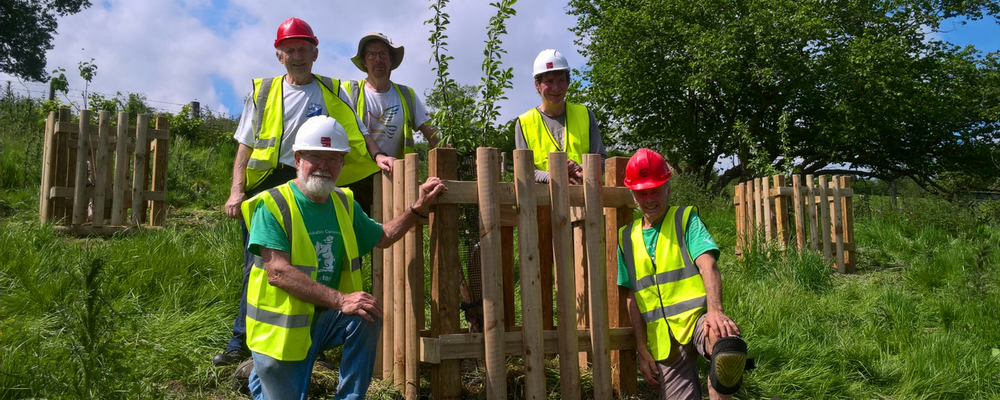
Warwickshire Conservation volunteers with their completed tree guards. 13 fruit trees were planted last winter, also by local volunteers. They are carefully chosen varieties on M111 or M25 root stocks, suited to the conditions at Llwyn Celyn and we have already had a small crop from some of the trees. 2 x Tom Putts (eater/cooker/cider), 3 x Monmouth Green (eater/cooker/cider), 3 x Morgan Sweet (eater/cider), 3 x Bakers Delicious (eater), plus 2 x Victoria Plum.
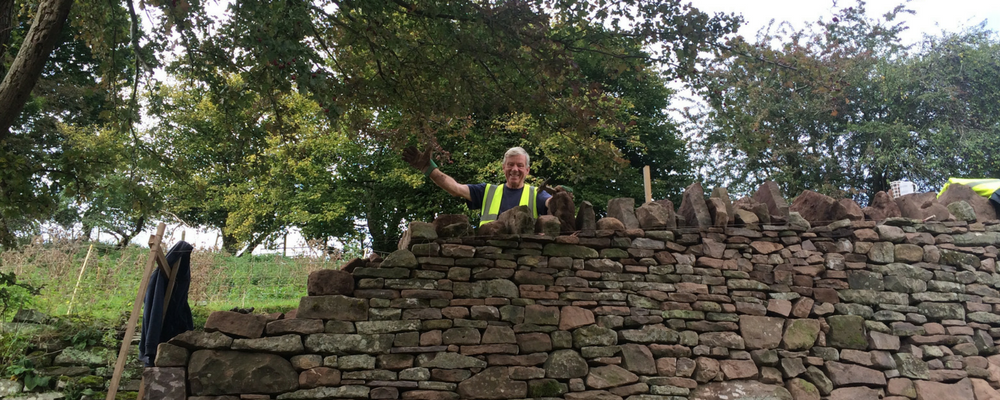
Drystone walling at Llwyn Celyn is a challenge. The historic wall that we are following runs along a trackway - down and across a slope. The stones are quite rounded, shaped by glacial water many millions of years ago, married with newly quarried stone, which is more regular in form. The wall needs to be of sufficient height to keep out the sheep – on one side of the trackway this is at 1m high, but on the lower side, the wall towers above head height.
NVQ level 1 & 2 Furniture students from Bridgewater College joined us on site in May and worked with local green woodworker Gareth Irwin to learn the art of Welsh Stick furniture making. This was a rather interesting challenge – the students, more used to planed and prepared timber, were presented with logs, which needed to be split, cut, shaped and smoothed with lathes and saw horses as well as a variety of hand tools.
It takes a skilled craftsman like Gareth two weeks to make a Welsh Stick chair, so our six apprentices did well to create one chair in less than five days. The finished piece is a delight – and will be put proudly on display in the Beast House. In September Gareth joined the team again, this time working on a tighter schedule of two days, to create a simpler, but no less characterful stool.
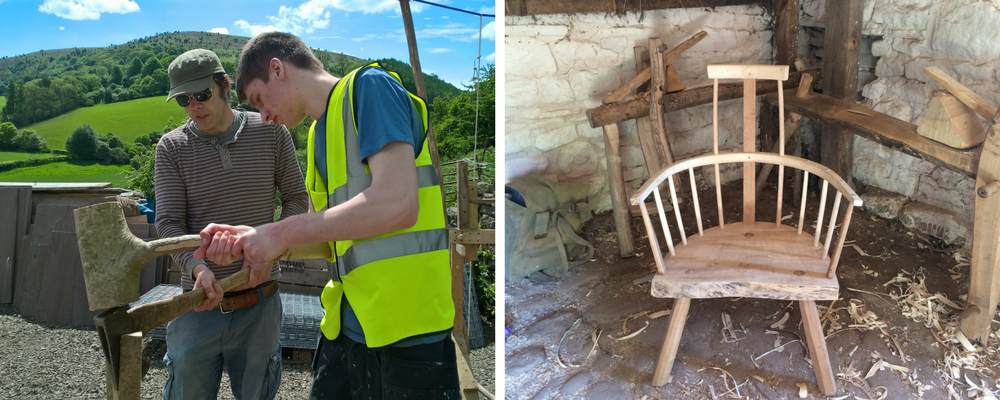
Gareth works in the tradition of centuries of makers before him , who have found beauty and virtue in simple pieces of locally sourced and coppiced timber.
We offered our volunteers bunk house accommodation in the grounds of Court Farm and Llanthony Priory, in the heart of the Llanthony Valley. It is an idyllic and magical spot, and those with energy left at the end of the day explored the environs by climbing up to the Hatteral Ridge or venturing to Grwyne Fawr reservoir, the ancient woodlands at Coed y Cerrig, or the ancient churches at Cwmyoy and Partrishow.
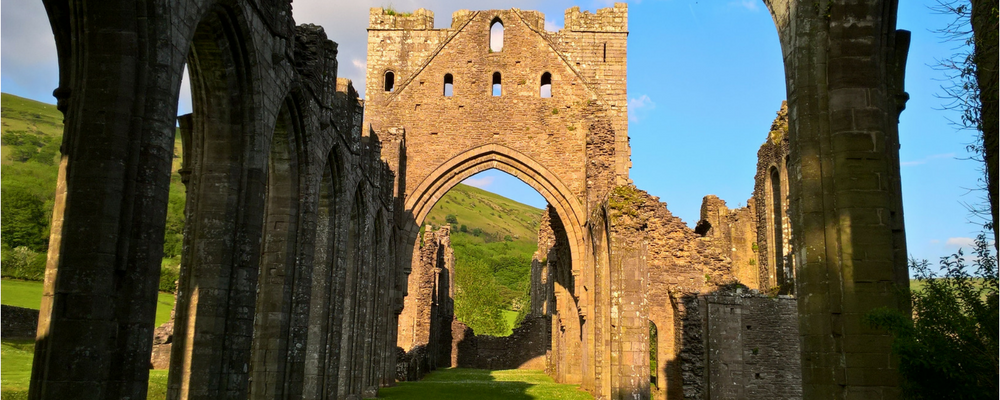
Llanthony Priory nestles in the heart of the valley. Llwyn Celyn was built on Priory land and there are tantalising clues to suggest that the relationship between the priory and Llwyn Celyn might be stronger than simply landlord and tenant. But with records long since lost during the turbulent times of rebellion and dissolution, we may never truly know what the link was.
Huge thanks must also go to Andrea and David from Trout Cottage, who kept us all well fed with mini banquets of the most wonderful home-made soups, stews, breads, pastries, pickles and cakes. Andrea also shares her spinning skills and David regularly demonstrates his woodworking skills too. In fact the area is filled with talented craftspeople and our public open days have been an opportunity to showcase their skills as well of those of the contractors on site. Well over 800 people have been welcomed with many more visiting in groups at other times.
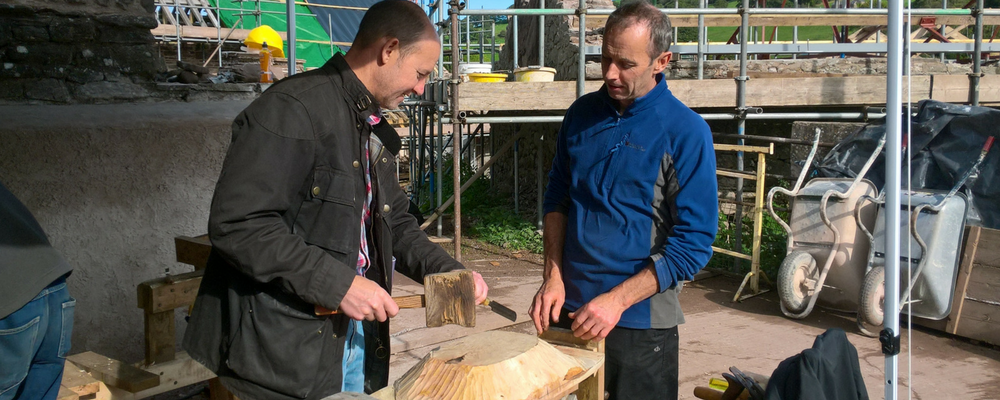
Spinning, knitting, spoon carving, wood carving, halter making and saddlery have all been demonstrated during our open days at Llwyn Celyn. In some parts of the country these heritage crafts are in danger of disappearing but in this part of south Wales, the craft community is keeping them alive and generously encouraging others to try their hand. During our open days we have been carving a ‘community’ dough bowl.
Now that the scaffolding is finally down, the building can be appreciated by all those who pass by and anticipation of its completion next year grows ever stronger. But we still have a lot of work to do. The large outbuildings, namely the Beast House and Threshing Barn, which will become community use buildings, are only just being repaired by our contractors IJ Preece. Their transformation will happen over the coming months.
We have been careful in our plans not to make any unnecessary alterations to the outside of these buildings. Although their interior functions will change, their exteriors will still communicate their original uses, as utilitarian farm buildings, whose evolution was organic and their repair, over the years decidedly makeshift. They are in safe hands now though, and with the help of our volunteers will stand the test of time, wind and weather for many more years to come.